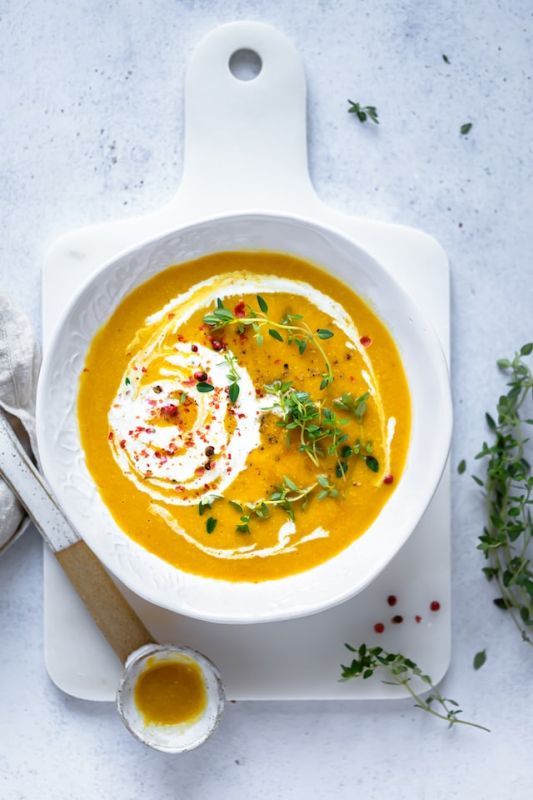
Food photography has become increasingly popular in recent years, with many food bloggers and businesses sharing images of their culinary creations on social media platforms. One of the most challenging dishes to photograph is soup. Not only is it difficult to capture the texture and details of the soup, but it also tends to cool down quickly and everything seems to sink to the bottom, including garnishes. The following article will give you a helpful soup photography tips for all levels of photography.
Understanding Soup Photography
 Soup photography can be challenging due to the liquid nature of the dish, and the difficulty in capturing steam and texture. One of the most important factors to consider when photographing soup is the angle of the shot. Different angles can be used to capture the texture, steam, and other details of the soup. It is also important to consider the style of soup photography you are looking to capture. Some popular styles include overhead shots, close-up shots, and lifestyle shots.
Soup photography can be challenging due to the liquid nature of the dish, and the difficulty in capturing steam and texture. One of the most important factors to consider when photographing soup is the angle of the shot. Different angles can be used to capture the texture, steam, and other details of the soup. It is also important to consider the style of soup photography you are looking to capture. Some popular styles include overhead shots, close-up shots, and lifestyle shots.
Tips for Capturing the Perfect Soup Shot

Lighting for Soup Photography
Lighting is a crucial element when photographing soup. Consider using a large window for natural light as much as possible, as it provides a soft, even light source that brings out the natural colors and texture of the soup. If you would rather have full control of your lighting, consider using a large softbox for your soup photograpy lighting. You may also use reflectors and flags to bounce light and control light. Avoid using overhead lighting, as this can create harsh shadows and a flat look.
Props and Styling for Soup Photography
Choosing the right props and background is also essential when photographing soup. Select props that complement the colors and textures of the soup, and choose a background that is neutral and does not distract from the dish. A simple wooden table or white background can be ideal for soup photography. Use props such as bowls, spoons, and napkins to add depth and interest to the image. For more information, see our food photography backdrops article.
Another technique is to add garnishes such as herbs, croutons, or spices to the soup to add texture and interest to the shot.
Capture Steam and Texture
Techniques for capturing steam and texture include using hot soup and photographing it immediately after it is served. This ensures that the soup is at its steamiest and most visually appealing. Consider using a backlight and photograph the steam over a dark background to ensure that it appears in the photo and doesn’t blend into the background.
Equipment for Soup Photography
A full frame camera with a medium zoom lens, such as a 24-70mm lens are must haves. A macro lens is also recommended for capturing close-up shots of the soup. A tripod and a remote shutter release can help ensure sharp and steady shots. Lighting equipment such as a softbox or reflector can be used to add additional light and enhance the natural lighting. Here’s a quick summary:
- Professional Camera
- Versatile Zoom Lens
- Macro Lens
- Off Camera Flash and Modifier (Softbox and/or Umbrella)
- Tripod
How to Float Garnish on a Thin Soup
Sinking garnishes can be infuriating if you do not have much experience styling food, and it can completely ruin a shot. You can see this tip in action via the video below, but for those of you who prefer to read, the process is actually ver simple.
- Take glass beads, preferably clear, and place them in the bottom of the bowl.
- Then you pour the soup over the top just so that it covers the beads.
- Then place your garnish and you don’t have to worry about it sinking.
Conclusion
Food photography is not all about sticking a plate of food down and taking a few shots. Just as a hair or makeup styling is imperative for shooting with Models, Food Styling is imperative for high quality food photography. Hopefully you can have this in your bag of tricks for next time you encounter this problem.




Get Connected!